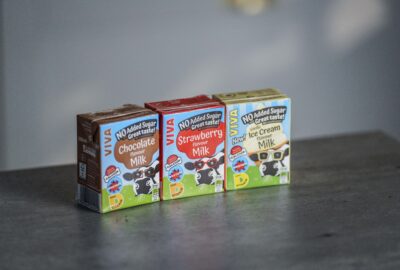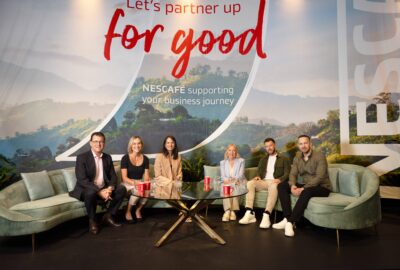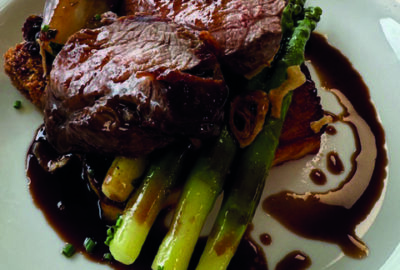The clean-drinking trend that’s stirring up the sector
As the warmer months approach, its time to start planning summer menus packed with barbeque flavours, salads, picnic platters and cool refreshing drinks. While consumers are well known to enjoy an alcoholic beverage on a warm summer’s day, trend reports over the last 6 months have highlighted a distinct decline in alcoholic drinks sales. Conversely, the no-to-low alcoholic sector (also referred to as NOLO), is bucking the trend and has been on a strong upward trajectory since 2019, projecting growth of 22% by 2024 in the UK and 34% worldwide.
Market Influences & Trends
The main driver behind the increase in non-alcoholic drinks has been a burgeoning health-conscious consumer group, seeking to swap hangovers for a healthier lifestyle. Despite the perception that alcohol consumption was on the rise during the pandemic, it was in fact, the opposite. Dry January 2021 was reported to be the most successful to date, with an estimated 6.5million[1] people participating in the UK alone. Over the course of the last 2 years, we have seen a number of innovative products launched such as Seedlip and Penitre, but there have also been new concepts introduced such as bubble tea, which has become mainstream amongst the younger generation.
“While popular with all ages, bubble tea appeals predominantly to a younger, Instagram-savvy age group – and we have several Instragrammers and Tik Tok ‘celebrities’ who have become regulars.” Says Anh Pham, founder of Paeonia Café & Bubble Tea Room.
Offering a wide range of flavours such as peach and orange fruit tea, bubble tea has captured consumer interest, with its unusual aesthetic achieved through the addition of tapioca pearls and imaginative toppings including popping jelly, egg pudding and chia seeds. Securing repeat custom through reward cards and new flavours, bubble tea cafes are reinvigorating a fresh wave of tea lovers – just with a slightly less conventional brew.
“New recipes and flavours are constantly being created, which go viral and reinvigorate the popularity of the drink, such as Fluffy Dirty Biscoff and fluffy crème brûlée,” comments Anh. “We also serve Hojicha tea, which is less well known than matcha tea but has a multitude of health benefits. Matcha has about 70mg of caffeine per cup, whereas Hojicha contains about a tenth of that, so can be enjoyed later in the day.”
Slushies are also set to see a revival, with the global slush machine market predicted to reach $391.3million by 2026[2], and kombucha which has predominantly been marketed as a drink with health benefits due to the addition of healthy bacteria, is still soaring in popularity. The golden thread of course between these three drinks trends is Generation Z, who are increasingly spearheading new opportunities in the hospitality sector. Adventurous and constantly seeking new experiences, the younger generation are adopting many trends via social platforms such as Tik-Tok before they are available to purchase here.
Satisfying the Sober Curious
Despite the fact that the younger generation are the driving force behind many new alcohol-free drinks entering the market, it doesn’t preclude operators in the care sector from adapting and introducing them to their menus through tasting activities or fermentation projects. However, bars and restaurants undoubtedly are looking for a more sophisticated answer to the NOLO trend as an increasing number of adults reduce their alcohol intake and adopt a healthier lifestyle.
“Its very hard to create exciting low sugar and low alcohol drinks at the same time. Sugar is one of the better flavour carriers, the same as alcohol, so removing both can lead to issues making tasty drinks.” Comments Alan Sherwood, Owner, Little Mercies. “To make life easier I would probably pick up something like Monin’s Sugar Free Sweetener, we actually make our own version of this in house. You could easily make an alcohol-free Mojito, or Tom Collins for example. Herbs can add a lot of flavour here without having to add sugar, maybe use some Lemon Thyme in your Tom Collins.”
Offering a non-alcoholic version of your cocktail menu is often a good starting point, giving consumers the flavours and aesthetics of cocktails that have proven popular for your particular business. “We adopted our popular Mojito cocktail and it is often made with hand-picked mint from some of our employees own gardens. It adds a fun flair & personal touch for our customers, The results were well received & it adds a great story for the local customer base.” Says Nikolas Opacic, Owner, Seven 54.
Alternatively, operators can stock a wide range of ready-made drinks with their roots in botanical flavour profiles such as rose lemonade and sparkling elderflower or mixers such as pink grapefruit tonic water. “We stock only 5 mixers, including soda, but that doesn’t mean all bars should have that few. We make a huge amount of ingredients in house, so we always have things like Raspberry, Strawberry, Banana, Grapefruit and Cranberry cordials or syrups. We can very quickly create new drinks with these. If a bar has that capacity, it makes sense not to overstock mixers that people may not order.” Recommends Alan.
Maximising Margins
Many UK producers are successfully establishing premium tier alcohol-free drinks – an opportunity that can also be realised by operators and caterers seeking to differentiate themselves from the competition. When Seedlip was first introduced, consumers were initially shocked by the price, however the increase of likeminded brands entering the market has changed expectations and consumers are now more accepting of premium level non-alcoholic drinks.
“We offer health shots & raw juices, with blends of Tumeric, apple, coconut water, charcoal & other healthy ingredients. These health shots are great for recharging & rejuvenation. Also great for your immune system in the winter to fight off colds & other bugs.” Says Nikolas Opacic
Using ingredients such as Madagascan vanilla, saffron and homemade preserves or applying techniques such as cold brewing and fermentation can also help to elevate your offer. Not only does this give your business a unique story to tell, but it assists with developing a premium pricing strategy that is comparable with other well-established consumer brands.
“Cold brewing tea is another fantastic way to infuse teas into a summer drink by extracting the ingredients in liquid over several hours. For some when it comes to cold brewing, they say it brings out flavours that they had never noticed before! You can brew with all types of tea with water, lemonade, milk – options are endless.” Krisi Smith, Co-Founder and Creative Director, Bird & Blend Tea Co.
The team at Little Mercies also adopt a homemade approach to creating non-alcoholic drinks. “We do a lot of preserving and fermenting instead, so we capture flavours when they are at their peak and find ways to keep them for later in the year.” Says Alan Sherwood.
Whether you opt for homemade or ready-made, the opportunity within the non-alcoholic drinks market is rapidly expanding and the category is one that every operator within the hospitality sector can exploit. It’s almost time to put up the parasols, dust off the deck chairs and get ready for Summer, so start your preparations for the warmer weather now!
[1] Alcohol Change (December 2020) Press Release
[2] Source: Snowshock


